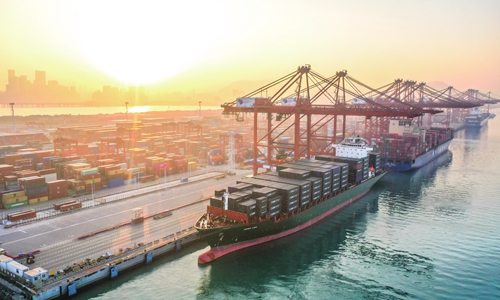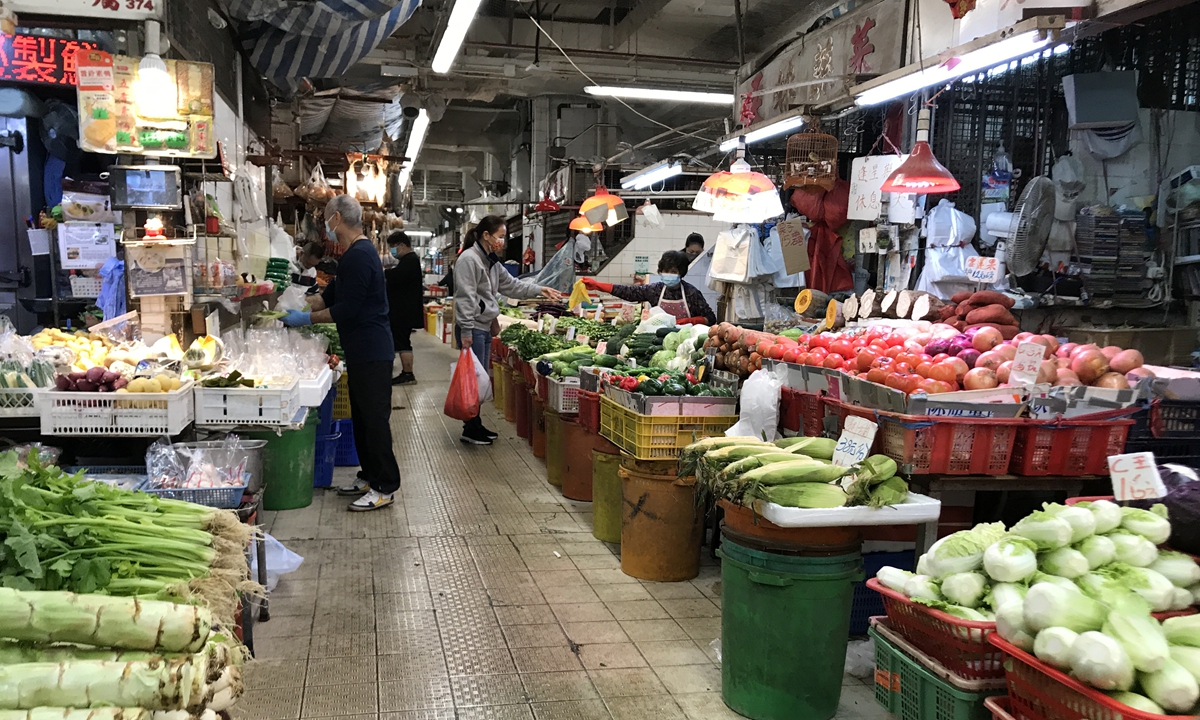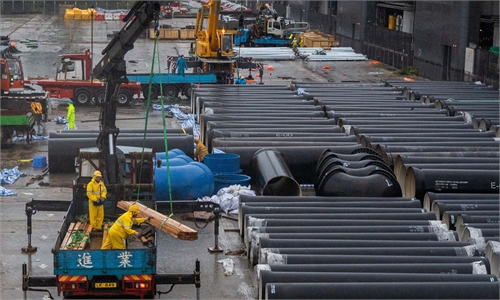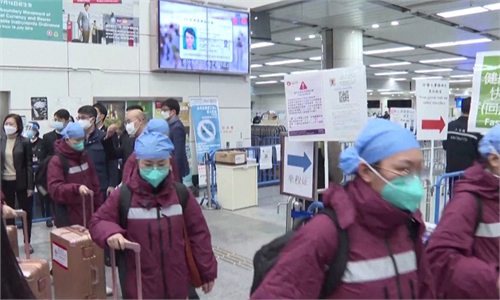
A freighter full of containers prepares to leave the port at the Dachanwan port container terminal in Shenzhen, South China's Guangdong Province, on January 21, 2022. Port zones in Shenzhen have been trying to optimize waterway transport channels for daily supplies to residents in Hong Kong. Photo: cnsphoto
All major ports in Shenzhen, South China's Guangdong Province, have opened waterway transport channels to ensure the supply of daily necessities reach neighboring Hong Kong Special Administrative Region (HKSAR), which is combating a severe COVID-19 outbreak.
The move in Shenzhen is part of the Chinese mainland's efforts to secure daily supplies to residents in the HKSAR, in addition to medical and other support for the region's anti-epidemic efforts.
At present, there are 134 weekly water express routes connecting Shenzhen ports and Hong Kong ports. From Tuesday, three fixed-time special routes will be fully open, which will ensure the daily processing capacity of at least 3,000 TEUs.
Cargo can be transported to Hong Kong's Tuen Mun River Trade Terminal from Shenzhen's Mawan Port in 2-3 hours. It takes 4-5 hours from Dachanwan wharf to Hong Kong Modern Terminal and 7-8 hours from Yantian Port to Hongkong International Terminals.
Medical supplies have been transported to Hong Kong from various cities in Guangdong over recent days. Also, supplies of daily necessities, including food and clothes, have been arriving in the HKSAR smoothly over the past several days.
A shipment of 52 TEUs of supplies, headed off at 10 pm on Monday, arrived at Hong Kong's Tuen Mun River Trade Terminal in the small hours on Tuesday, including sweaters, pajama pants, toothbrushes, slippers and other daily necessities purchased online by Hong Kong residents, the Xinhua News Agency reported.
Prior to this, several shipments of vegetables, fruit and other daily necessities had also arrived in Hong Kong.
At 5 am on Monday, about 51 tons of vegetables were transported to Hong Kong in four containers from Shenzhen's Yantian Port and were immediately put on the market after being inspected by the Hong Kong Centre for Food Safety.
Also on Monday, barges carrying 200 tons of vegetables, fruits and eggs arrived in Hong Kong from Shenzhen Dachanwan wharf.

Residents buy vegetables in a market in Hong Kong on February 12, 2022. Photo: VCG
To facilitate customs clearing and increase efficiency, Shenzhen customs have adopted a new regulatory model, which allows clearing in advance and non-intrusive inspections.
The throughput volume of vegetables from the mainland for supply to the Hong Kong's local market stood at about 750 tons on Monday, some 80 percent of the volume of a normal day, said the Agriculture, Fisheries and Conservation Department of Hong Kong on Tuesday.
The supply of chilled poultry on Monday remained steady at around 70 percent of that of a normal day while the supply of chilled meat is slightly more than that of a normal day.
Global Times



